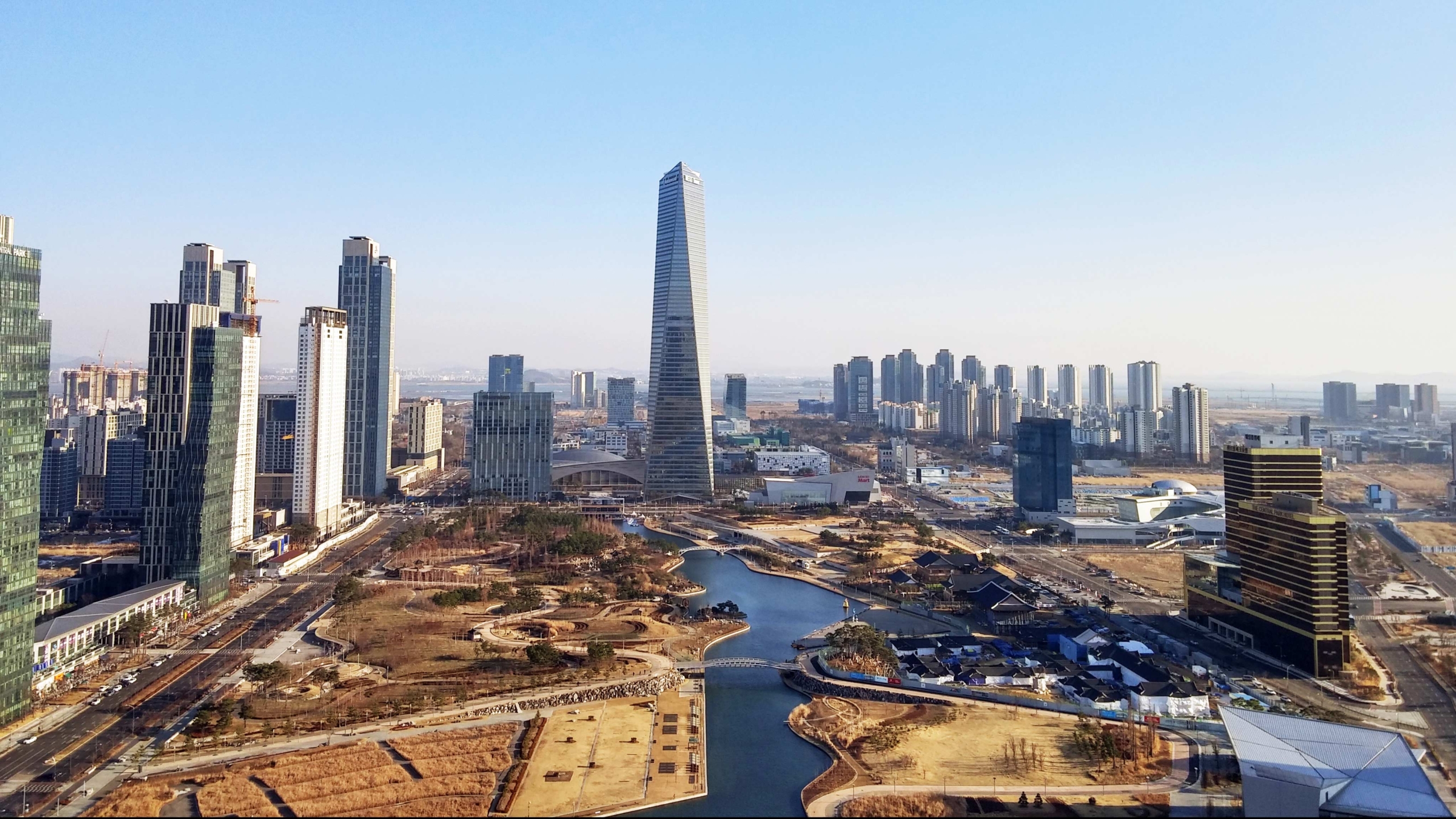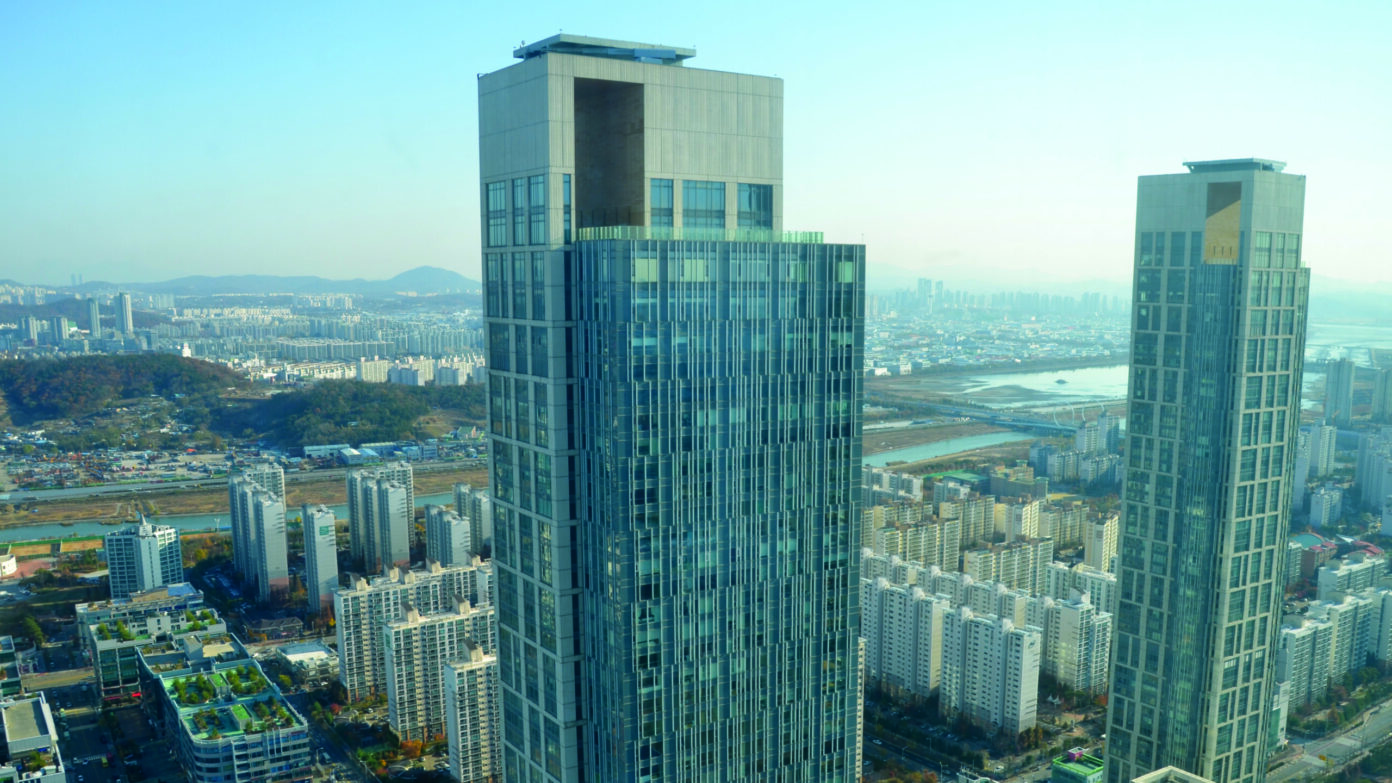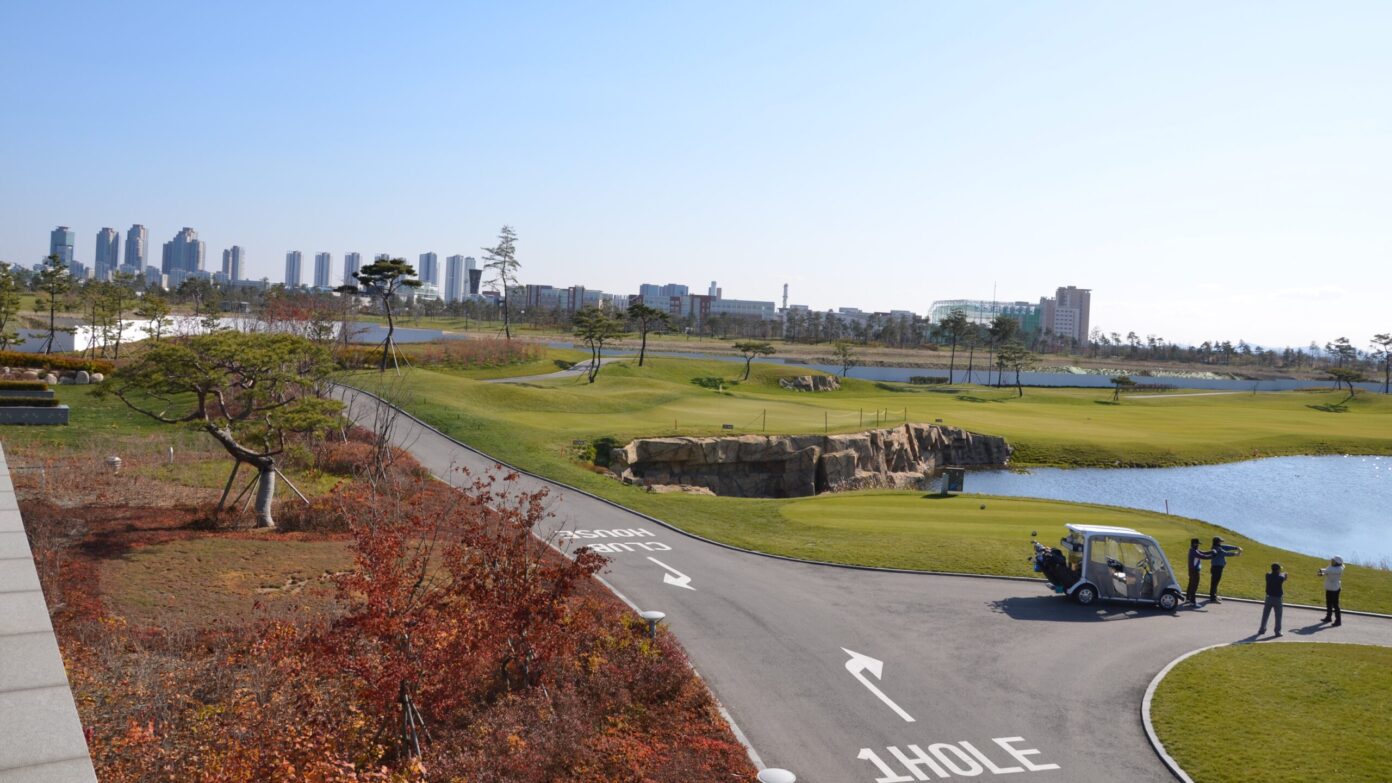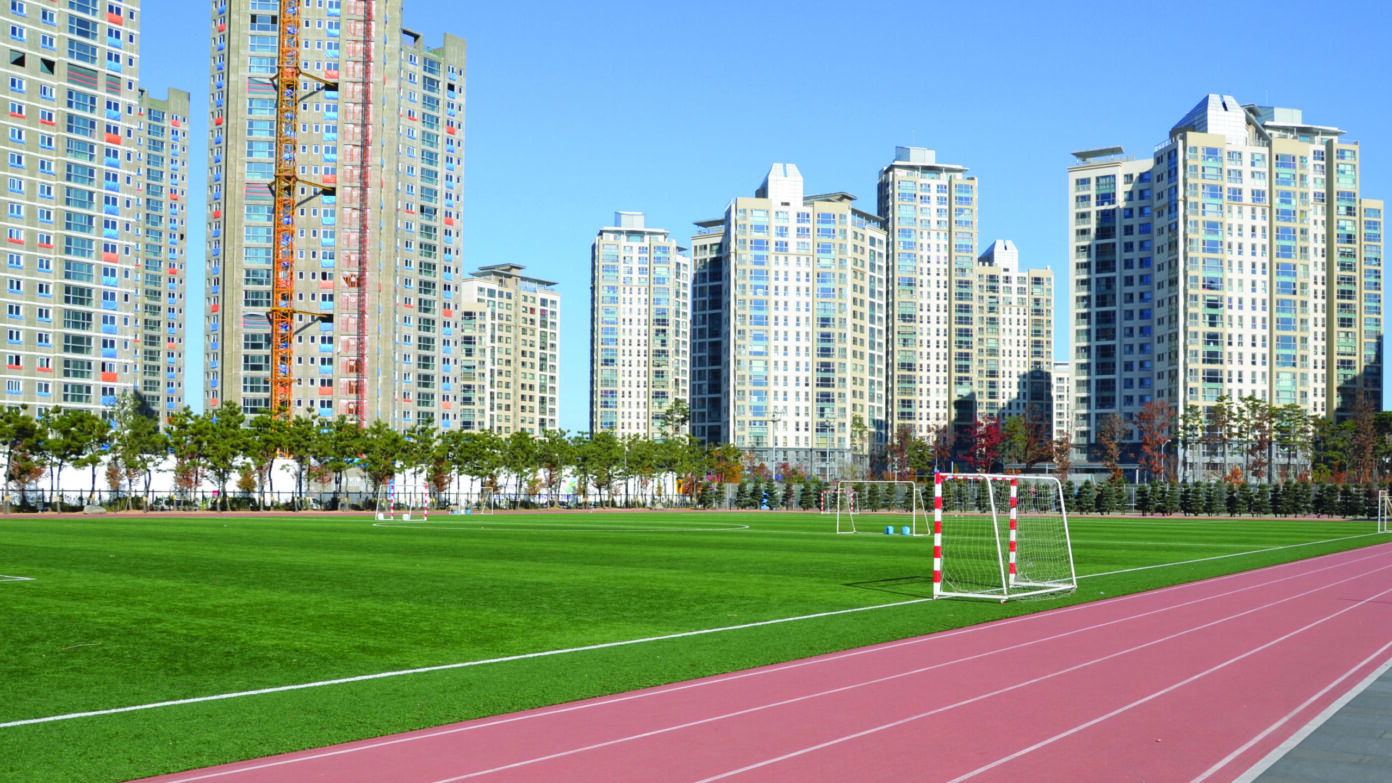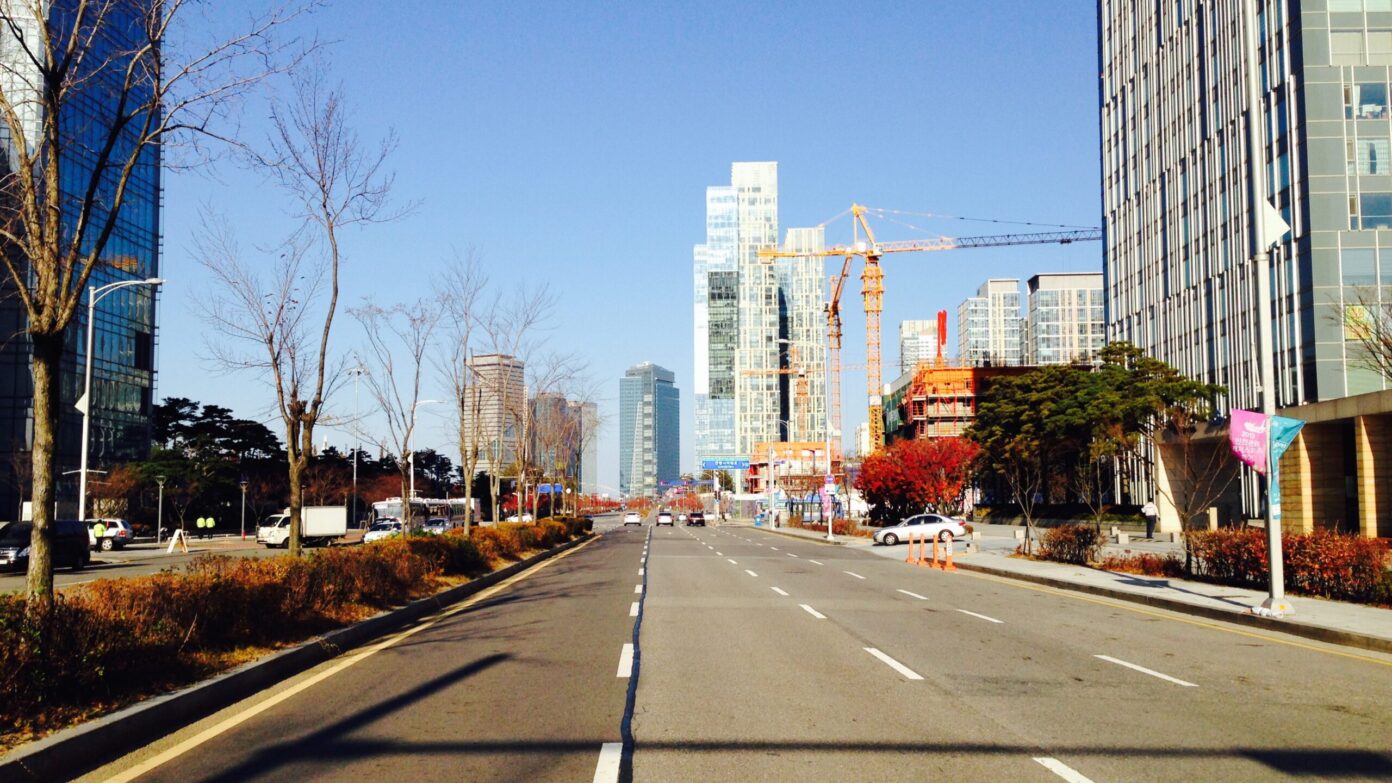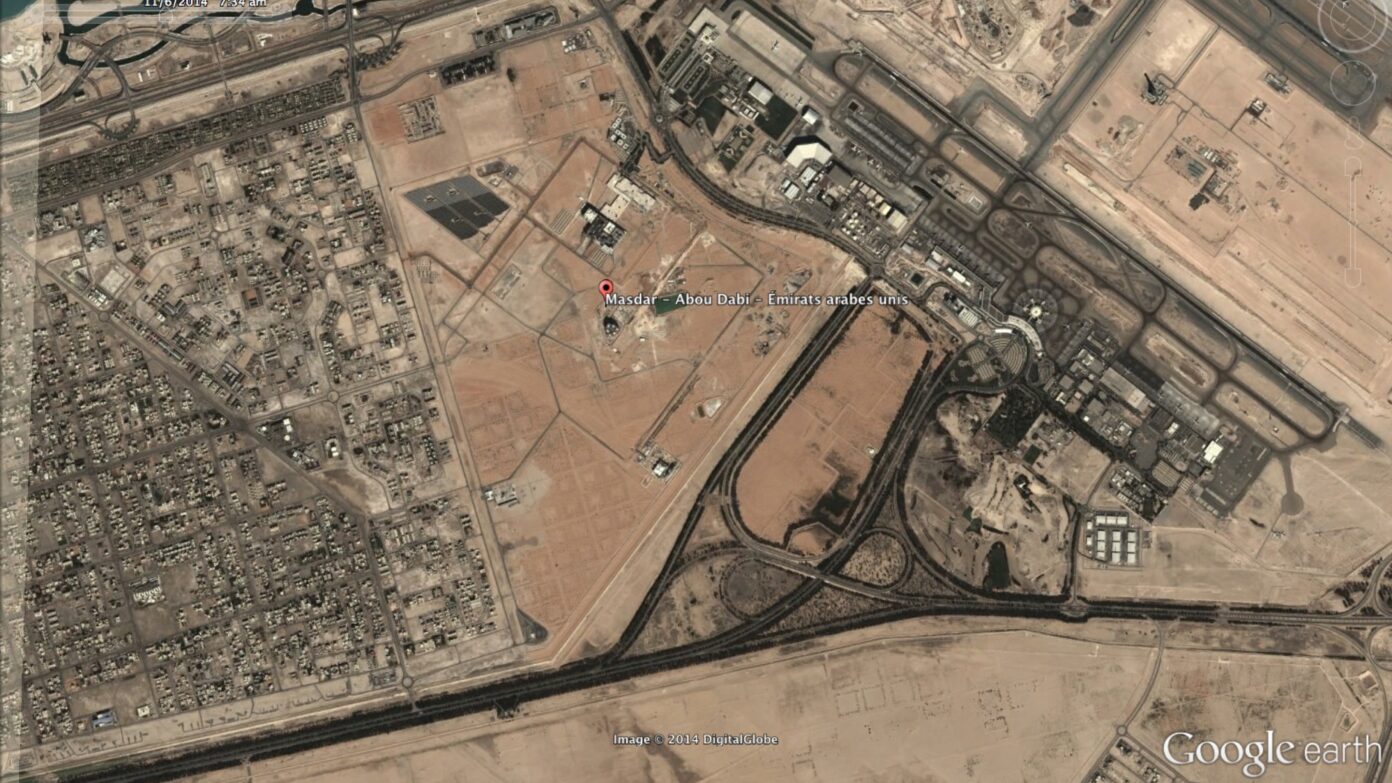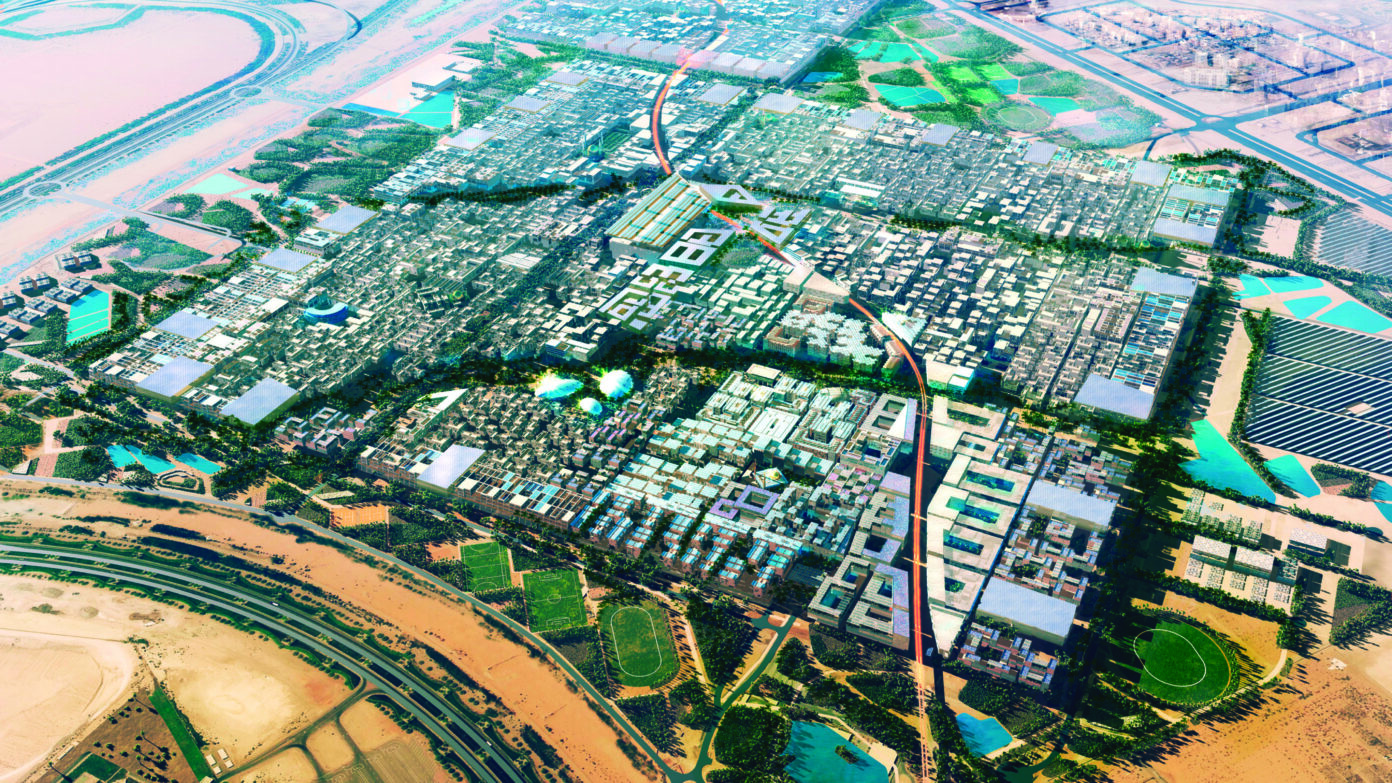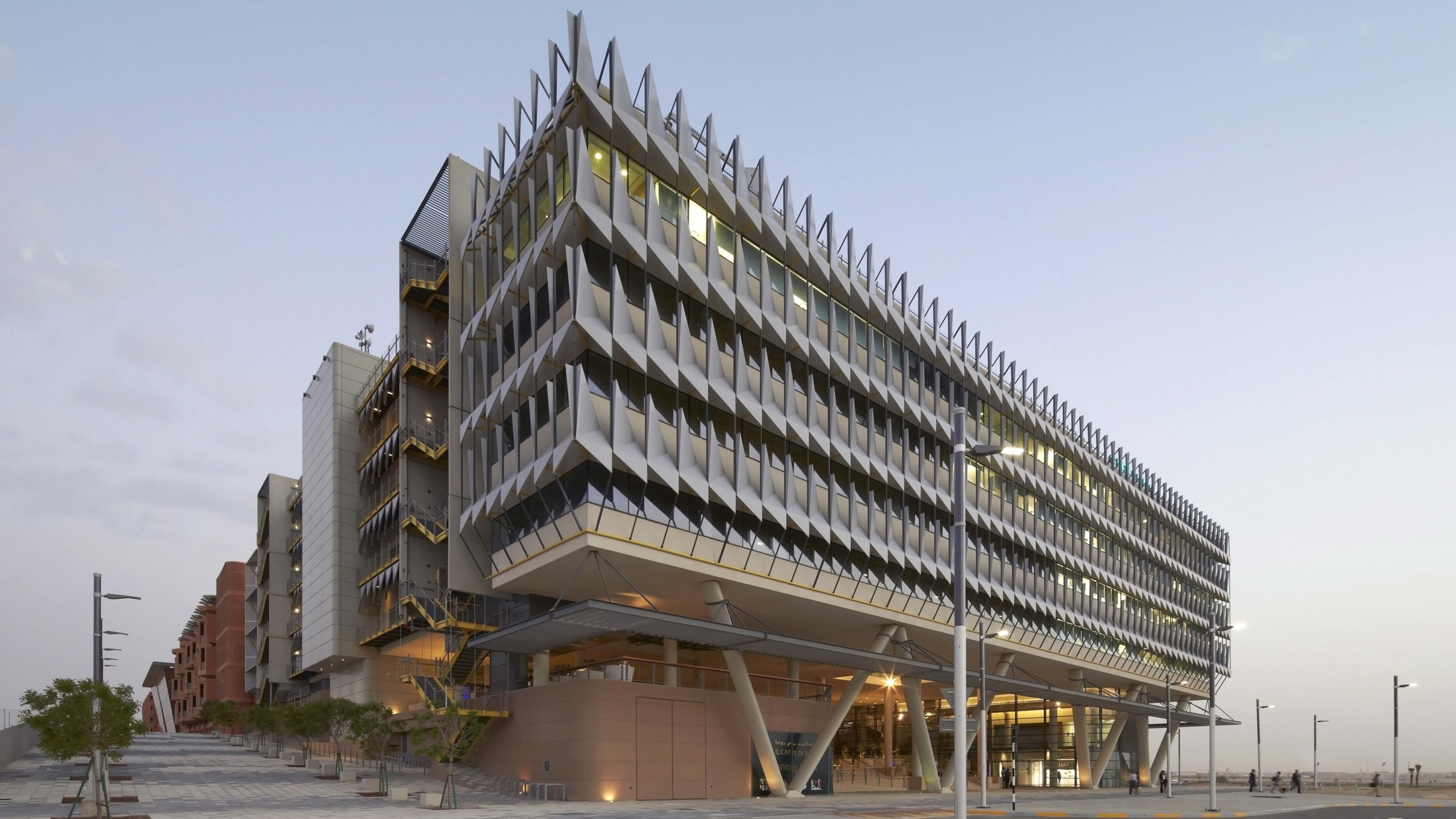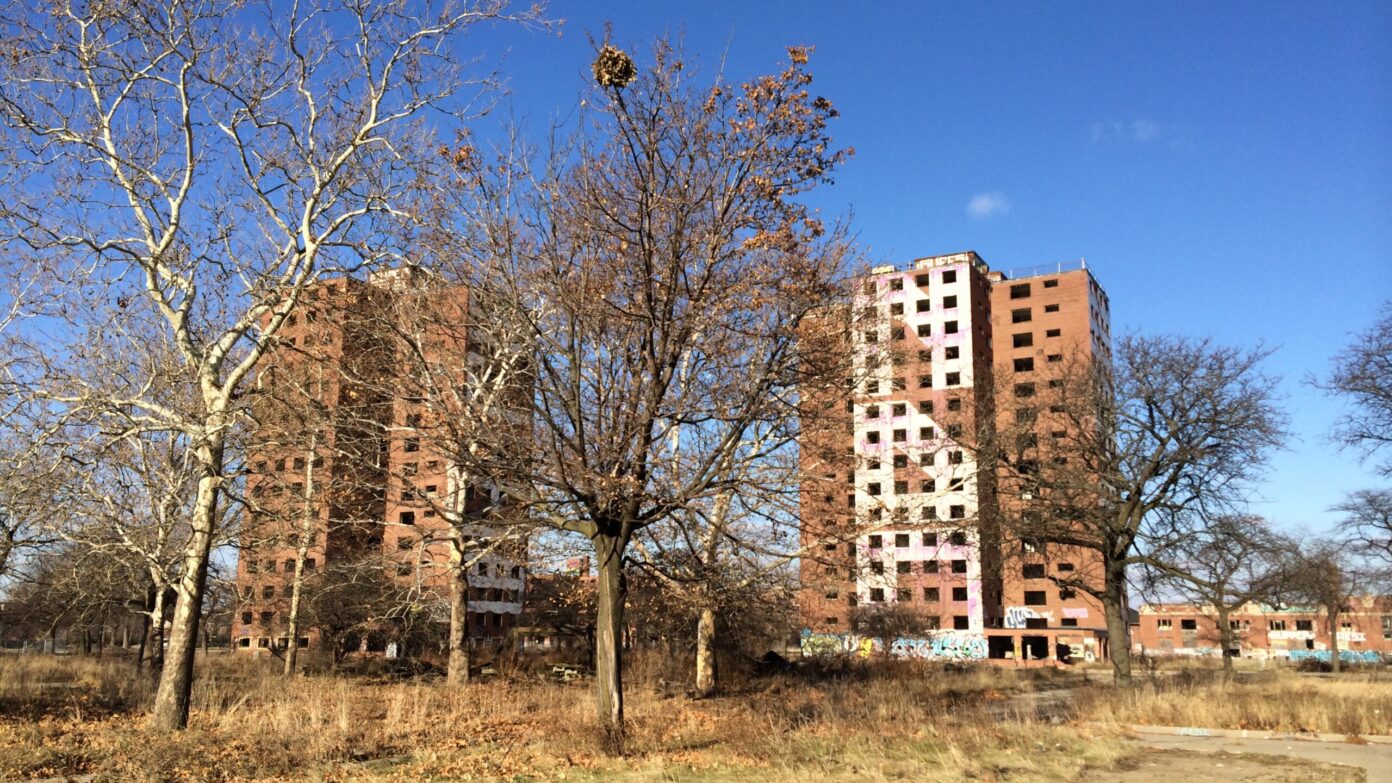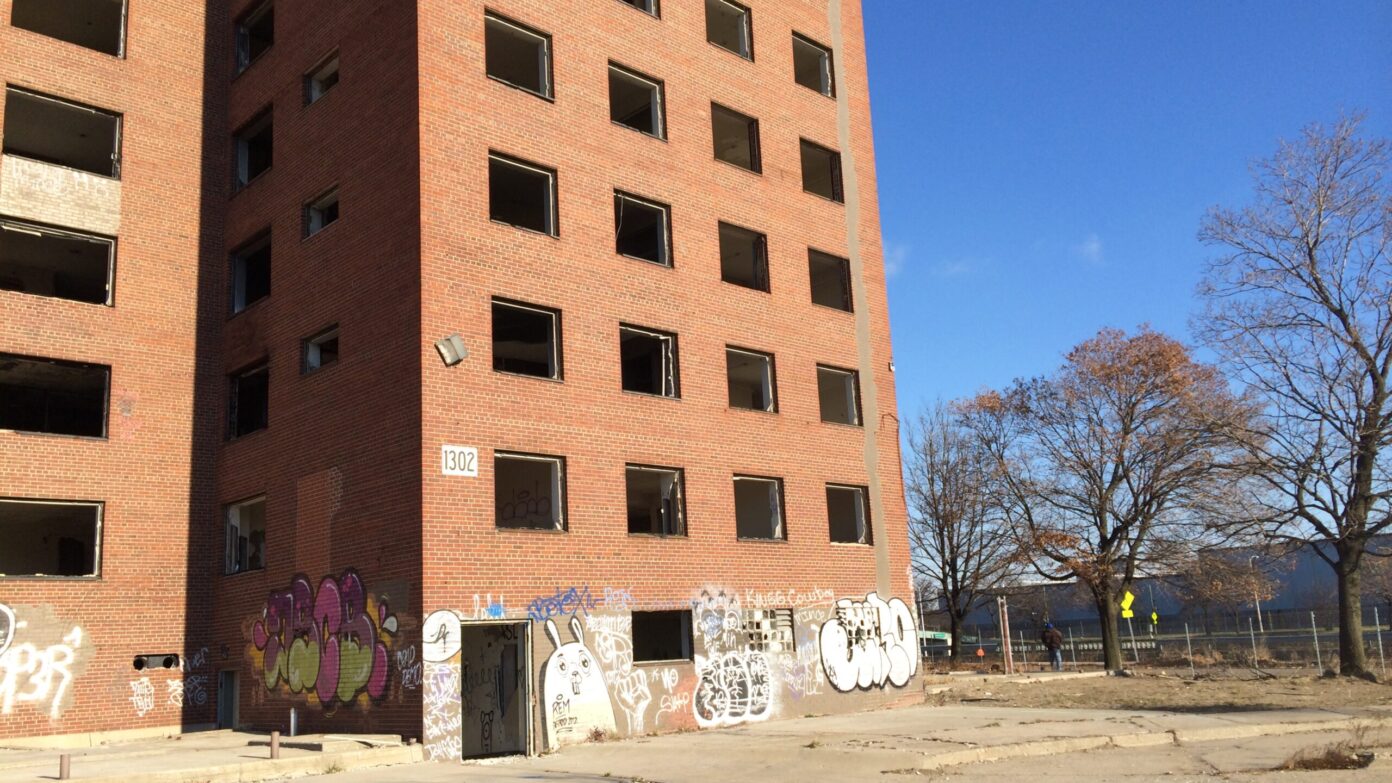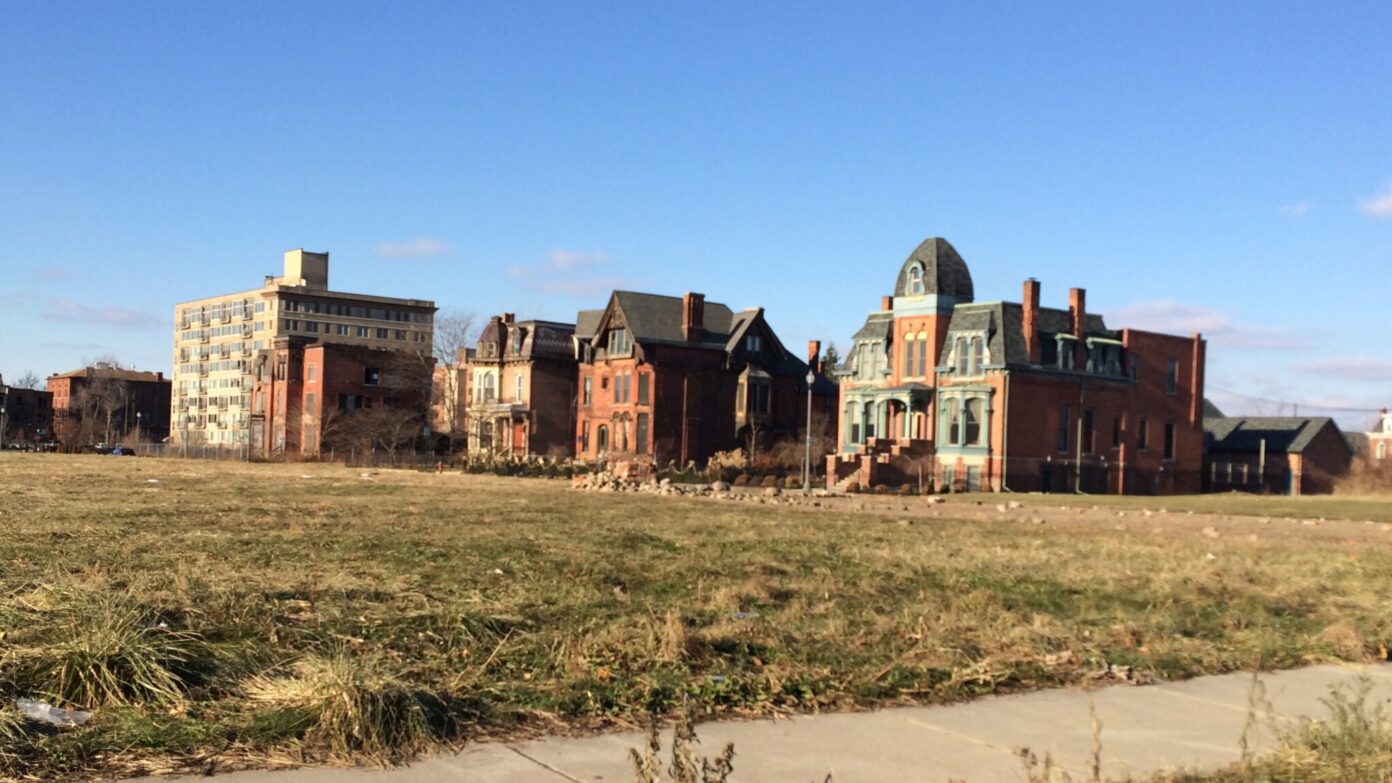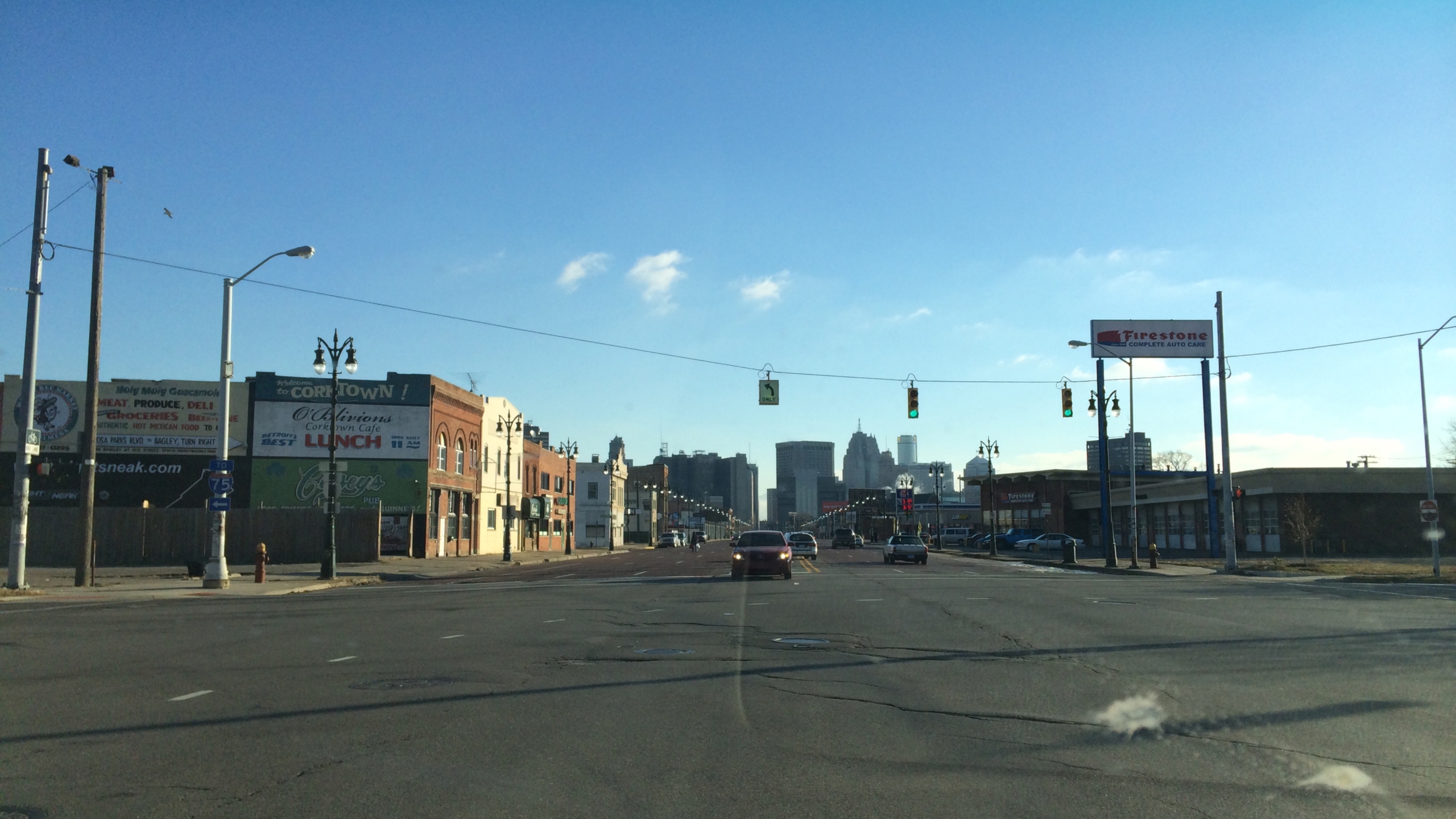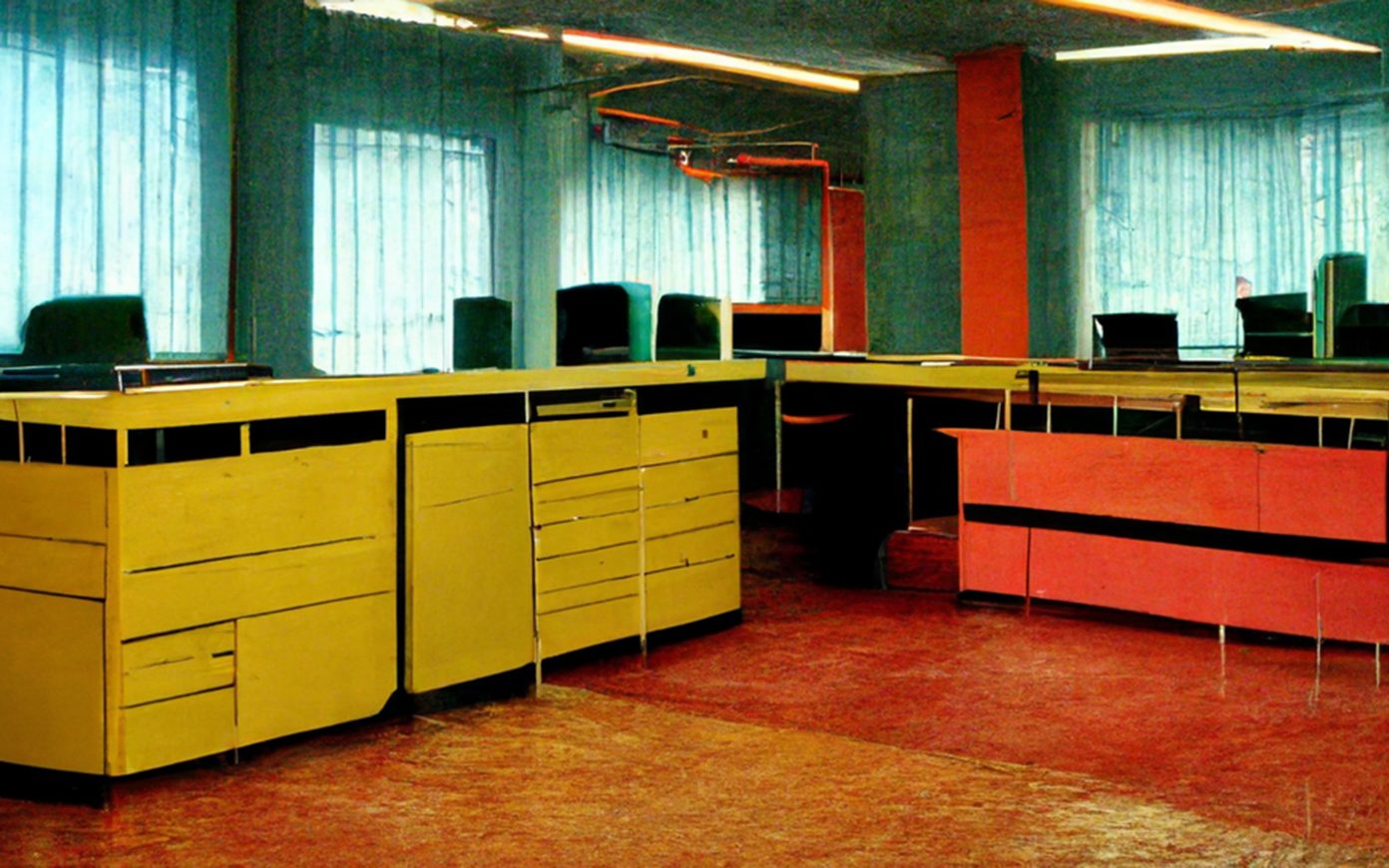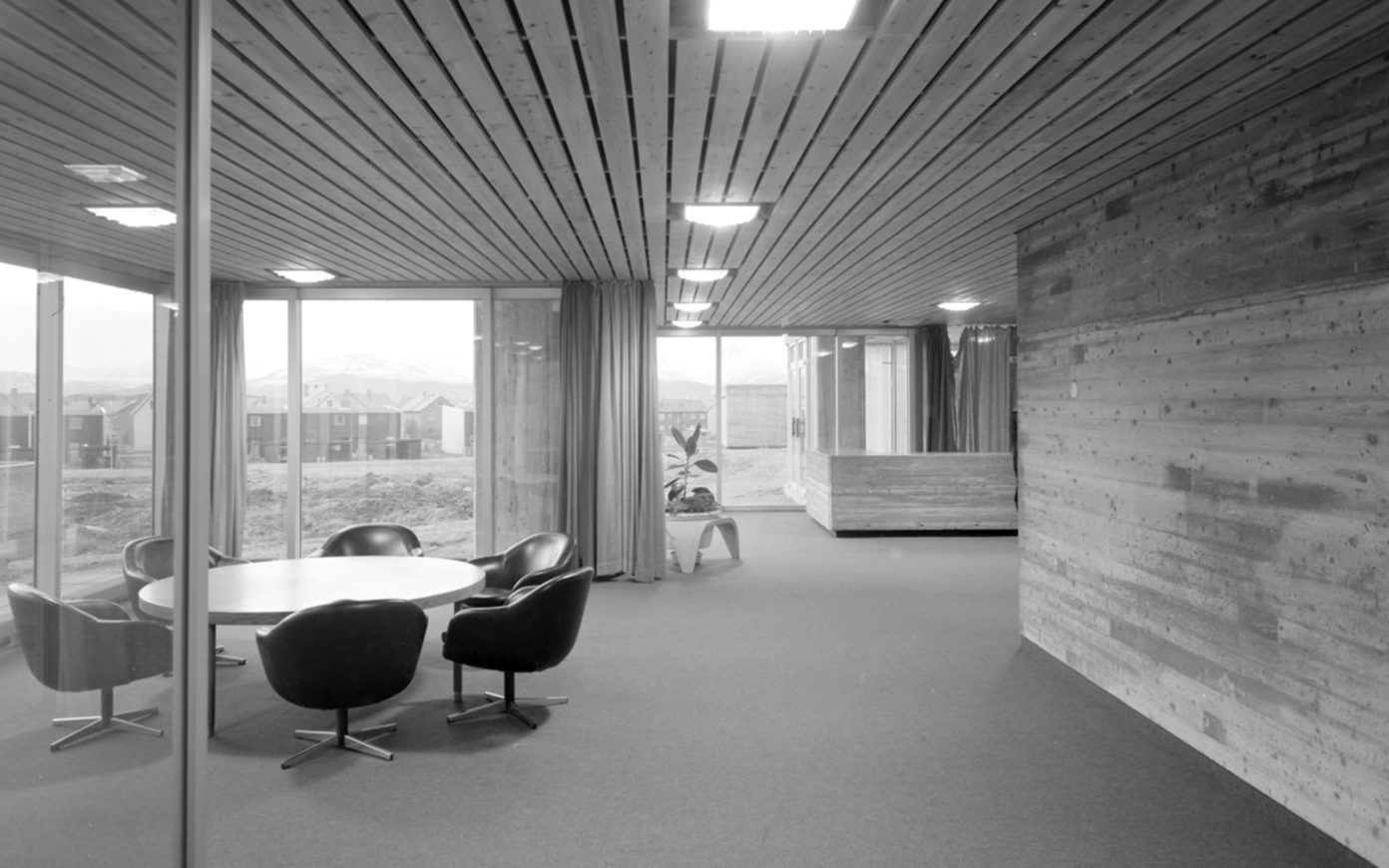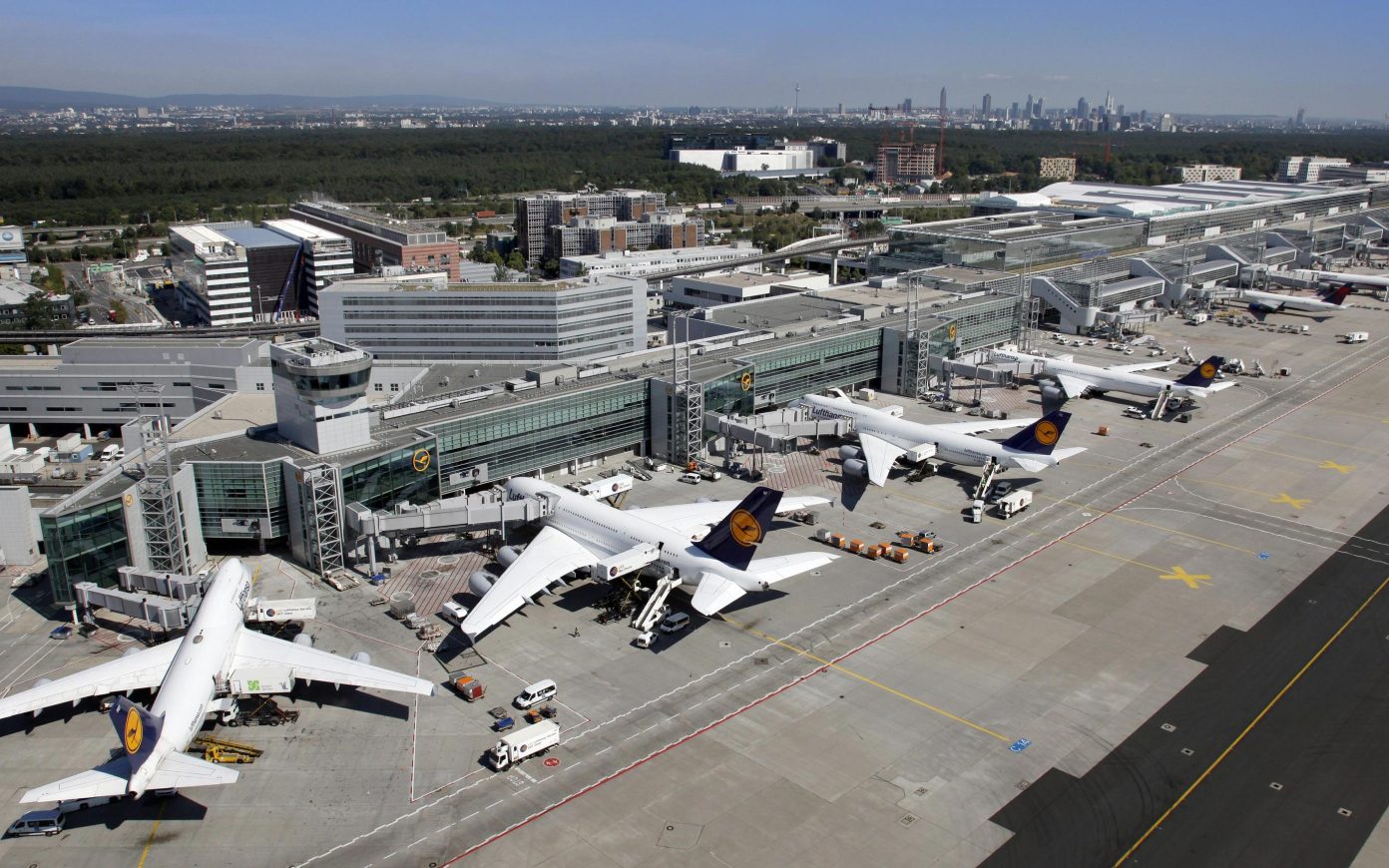Discovering a city is always a unique and intimate experience. Especially when you discover it for the first time, having been transported there in a flying or floating metal tube (or one on wheels) and dealing with a watch that resolutely displays a different time. A new time-space is upon you. You can either find your bearings as quickly as possible or give in and float dizzily along, perhaps catching a glimpse of another reality. One piece of advice: above all, do not try to understand everything immediately.
Songdo: the ubiquitous city
My experience in Songdo began like this: I arrived one night at the airport in Incheon, jumped into a “disco-taxi” that took off at high speed over a brand new bridge spanning nearly thirteen miles (twenty-one kilometers) over the Yellow Sea, to be left off at an international hotel. I went up to my room and discovered a city at night through my window. Bright lights define the skyline of buildings and public spaces; only a few cars on the road. No billboards or shop signs to distract me. My imagination did the rest. Glued to the window, I mapped out a fantasy of this city of the future that everyone is talking about.
A lot has been written about this city, rising as it did out of the ground (or rather out of the mud as its 1,500 acres [600 hectares] were reclaimed from the sea) after ten years of work and 35 billion dollars invested in this gigantic project, which in time (2025?) is supposed to accommodate 65,000 inhabitants and some 300,000 commuters. Songdo aims to be the archetype of the sustainable city at the forefront of technology. Its infrastructure covers all aspects of sustainable development: transport (connections to future rapid transit networks, an urban mix allowing travel from home to work in less than ten minutes, the infrastructure of a “walkable city”), water consumption (use of seawater and rainwater, treatment of wastewater), energy consumption (LED bulbs, solar panels, LEED-certified buildings), treatment of waste (75 percent of construction waste recycled, a pneumatic waste collection network), quality of life (40 percent of green spaces, a golf course in the city center, an international school and university campuses, convention centers, etc.). With regard to technology, everything operates via computer synapses that are buried and hidden away, offering security and services. Thousands of surveillance cameras, real-time traceability of vehicles, individual connections to the implementation of the latest automation facilities: all these make Sondgo the first ubiquitous city.The “U-City” or “Ubiquitous City” is the land of big brother experimentation by telecom companies. It is designed according to a logic of global integration of energy and information systems in a continuum linking the private sphere (control panels to control all functions of one’s habitat—lights, temperature, blinds, music—and remote monitoring of children) to public spaces (monitoring, control, and optimization of traffic with vehicles equipped with radio-frequency identification [RFID] chips, dynamic and intelligent management of signaling, management of the flow of people and adaptation of the level of public lighting). It therefore becomes a single common space-time for all the inhabitants, projected forward in a virtually enhanced existence: you can be everywhere, at any time.
The next morning, the city—or should I say the building site—appears in all its excess, its current state of development transforming it into an oversized backdrop in relation to its actual population. The accumulation of urban and cultural clichés, celebrating a very Western kind of nostalgia, is probably the most disturbing: Venetian canals, a mini Central Park, Savannah town squares, a cultural center from Sydney, and a waterfront from Manhattan. The whole represented in the shape of a plane which strangely (or not!) resembles a microprocessor, with the police station planted in the heart of the city.
